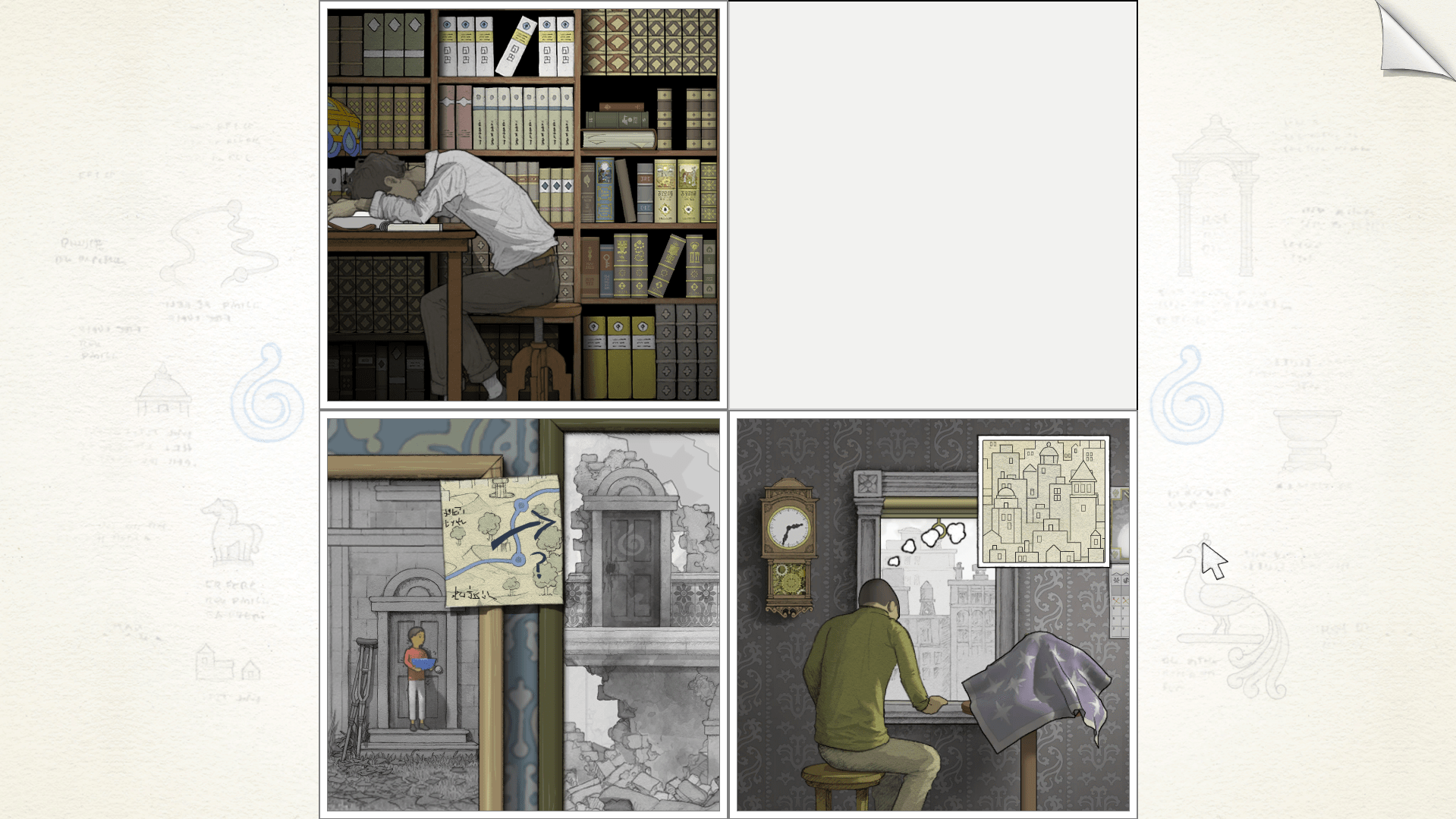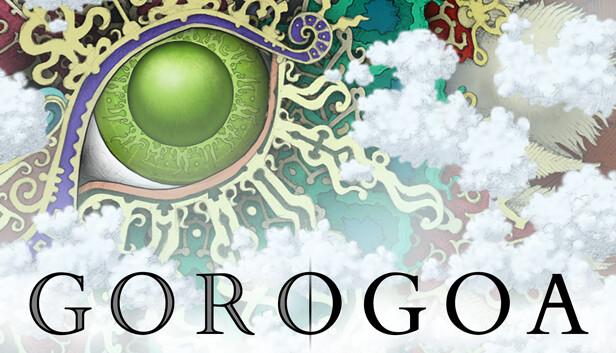Gorogoa is a puzzle game developed by Jason Roberts and published by Annapurna Interactive in 2017. This game is available on all major platforms its intended audience seems to be anyone who enjoys solving intermediate to difficult puzzles or likes finding patterns. Due to the complexity and difficulties of the game, it seems to be geared towards teens and older people. For the critical play, I played this on my laptop through Steam. I believe that the mechanics of the puzzle influence the game by introducing the dimension of narrative through simple click-and-dragging and making the player recognize important landmarks that are essential to the narrative. As players grow more accustomed to the patterns and reuse old techniques, they are able to focus less on the features of the game and see the bigger picture of the story. By the end of the game, the puzzle itself feels like second-nature and the story takes over fully.
In Gorogoa, players progress through the storyline using a series of clicks and drags of images. In a standard image, the player is able to traverse through the “snapshot” and gather clues related to the puzzle. The unique mechanic in Gorogoa is the ability to unstack and overlay parts of the image. For example, if there is a bright star in the sky in one image, and a cutout area in a lamp in another image, the player can stack these images together to bring light into the broken lamp. At the start of the game, none of these detailed instructions are given and instead, the player learns to solve these puzzles through experience. I find that since the players are learning new techniques to solve puzzles as they play, it makes them more captivated by the story and feel as though they are a part of the game, not just playing it. The game itself uses 4 blank tiles which can be filled with the images. Because this layout is so simple, I believe that it puts the player into a situation where they have nothing to focus on but the images. 
One improvement I would make with this in mind is allowing the canvas to be larger, or using the whole screen as a canvas. At certain parts of the game, I found it hard to see the image, which made it a bit frustrating to solve puzzles, since it felt like I could solve the puzzle if I could just see it. I believe that it would also be interesting if the tile system was removed and players could instead interact with each photo as they would on a normal table. Otherwise, I find that one of the most clever systems in this game is being able to connect seemingly unrelated photos. For example, in one scene, the player could use train tracks as a ladder to travel through different photos. Since the story is complicated and often difficult to understand, using this mechanic makes the player think about how these pictures might be connected.
I find that this game incorporates the narrative, challenge, and discovery types of fun. The narrative aspect is fulfilled by the snippets of connection found in the images. Even after finishing the game, I didn’t really understand what was going on, but I was able to piece together short pieces of the big picture. For players who are more adept at discovering hidden stories or who enjoy finding hidden meanings, this would be a great game to play. For the challenge aspect, I found myself feeling challenged and often stumped while playing this game. I think that the puzzles are at a good place balance-wise, since it feels like the player is at a disadvantage, but they are not so difficult that you ever feel as though you can’t figure it out. Especially in the later chapters where the puzzles are more complex and span more images, it is a game that grows in difficulty alongside the story. Finally, this game is fundamentally a story that must be discovered, and there are also physical discovery elements in the game.



